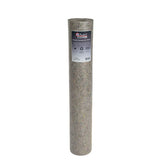Transporting goods safely and securely is crucial, whether it's tools, equipment, or even personal belongings. An elastic trailer net is a versatile tool for maintaining stable loads during transport. Thanks to their flexible design and durable, easy-to-use design, elastic trailer nets can ensure your items are delivered safely, without accidents or damage. We'll guide you through everything you need to know about using an elastic trailer net: from understanding its functions to proper installation, best practices for securing different types of cargo, and maintenance tips. This is the ultimate guide you need—whether you're using a standard net for your trailer or looking for a custom-made one.
Step-by-step guide to using elastic trailer netting
Step 1: Getting to know the functions of an elastic trailer net
It's essential to understand the design and functions of an elastic trailer net before using it. They are made of high-quality elastic materials and are usually reinforced with strong cords for maximum durability and flexibility.
The main features are:
-
Elasticity: The net's material is elastic and easily adapts to different cargo shapes and sizes, ensuring everything inside is securely held in place.
-
Mesh design: A dense mesh pattern prevents small items from falling out, allowing both large and small loads to be transported safely.
-
Hooks or fasteners: Most nets come with built-in hooks or fasteners that allow you to easily and securely attach the net to your trailer.
Product tip:
Consider it
Step 2: Installing the elastic trailer net correctly
Installation is crucial to ensure the safety of your cargo. Follow these steps for best results:
Step-by-step installation guide:
-
Prepare your trailer: Clean the trailer and remove loose objects. Arrange the load neatly to maximize space and stability.
-
Unfold the net: Stretch the net over the load, ensuring it's completely covered. The net can be stretched to cover larger objects as well.
-
Attach the net: Secure it to the edges of the trailer using hooks or fasteners. Make sure it's snug, but not too tight, to prevent damage to the elastic.
-
Check the cover: Check that the entire load is properly covered and secured. Adjust if necessary to prevent shifting during transport.
Product tip:
Improve your installation process with the
Step 3: Best practices for securing different types of cargo
Different types of cargo require different approaches. Here are some tips:
-
Lightweight items:
Cover lightweight items like boxes or bags with the tight mesh of the net. Place heavier items on the bottom to prevent them from shifting. -
Large items:
Place large items such as furniture or appliances in the center of the trailer and stretch the net evenly. Use additional straps or bungee cords if necessary. -
Irregularly shaped cargo:
Tools or sports equipment should be carefully placed to avoid gaps in the net. Distribute the hooks evenly around the trailer.
Step 4: How to Maintain and Store Your Elastic Trailer Net
Good maintenance extends the life of your network:
-
Cleaning: Clean the net after each use with mild soap and water and let it dry thoroughly before storing.
-
Regular check: Check regularly for signs of wear, such as fraying or loss of elasticity. Replace the net if damaged.
-
UV protection: Avoid prolonged exposure to sunlight. Store the net indoors or in a shady spot.
-
Use a storage bag: If the net comes with a bag, use it to keep it tidy and prevent tangles.
-
Keep away from sharp objects: These can damage or puncture the elastic.
Conclusion
A elastic trailer net A trailer net is an essential tool for safe transport. Knowing how to properly install, maintain, and use it with different types of cargo can prevent accidents and protect your load. Whether you choose a standard net or a custom-made one, the right techniques will make your transport experience smoother, safer, and stress-free. Invest in a quality trailer net and use this guide to maximize your transport options.
Good luck with transporting!




